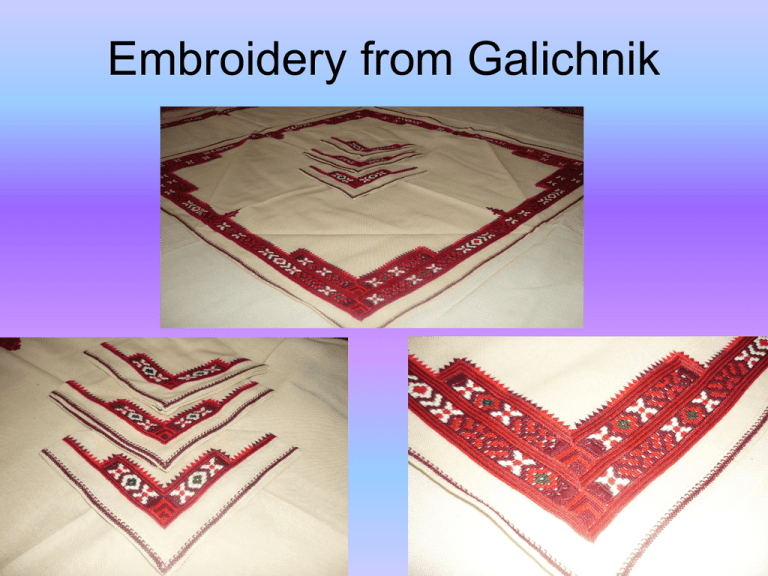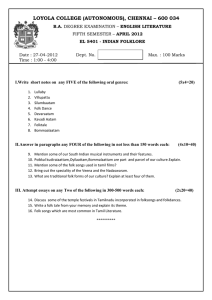Galicki vez - internationalfriends
advertisement

Embroidery from Galichnik Traditional Macedonian Embroidery Macedonian folk embroidery clearly testifies to the creativity of its creator-Macedonian women and the faith of the Macedonian people in continuing the traditions from next generation.The folk embroidery has historical significance by these folk preparation. Characteristic of all English embroidery is their performance by counting the wires to the canvas, and the typical is goblen technique, charge and strict geometric ornaments. Embroidery from Struga Embroidery from Struga Small and pleasing relief ornamentation and composition (triangles, quadrilaterals, polygons, rhombuses and crosses in different combinations) give a characteristic stamp embroidered shirts from Struga. Embroideries are derived from wool, silk or cotton thread and a real ornamental flower garden which has only Struga embroidery. Embroidery from Chelopek Embroidery from Chelopek National costume of Podgora nest for only five villages, among them the village Chelopek, they are all willing valley Dry Gora.The women folk costume from this region is very decorative and richly adorned with beautiful embroidery and various other decorations that closely resemble former medieval folk costumes that meet frescoes from the 14th century Macedonian monasteries and give decorated mosaic effect Debarski vez Debarski vez Debar embroidery is most abundant in the western part of Macedonia,is the most caracteristicit a female dress with richly embroidered motifs on the sleeves of the shirt, usually a good technique decorations, numerous upper white without sleeveless or shirt woven robes, long to the knee, as and other decorative details that act as striking striking mountain costume which is most typical embroidery Miak Debar in Galichnik. Knitted Hand Work Macedonian Folk Customes Macedonian Folk Customes Macedonian Folk Customes Traditions of Macedonian Folk Customes Folk costumes in Macedonia have got a tradition dating from centuries ago. They are part of the Macedonian people's culture and they represent a significant branch of folk art work. They were created by all the people kept up from generation to generation and while transforming they included many elements by the different cultural influences which appeared in this part of the Balkans.






